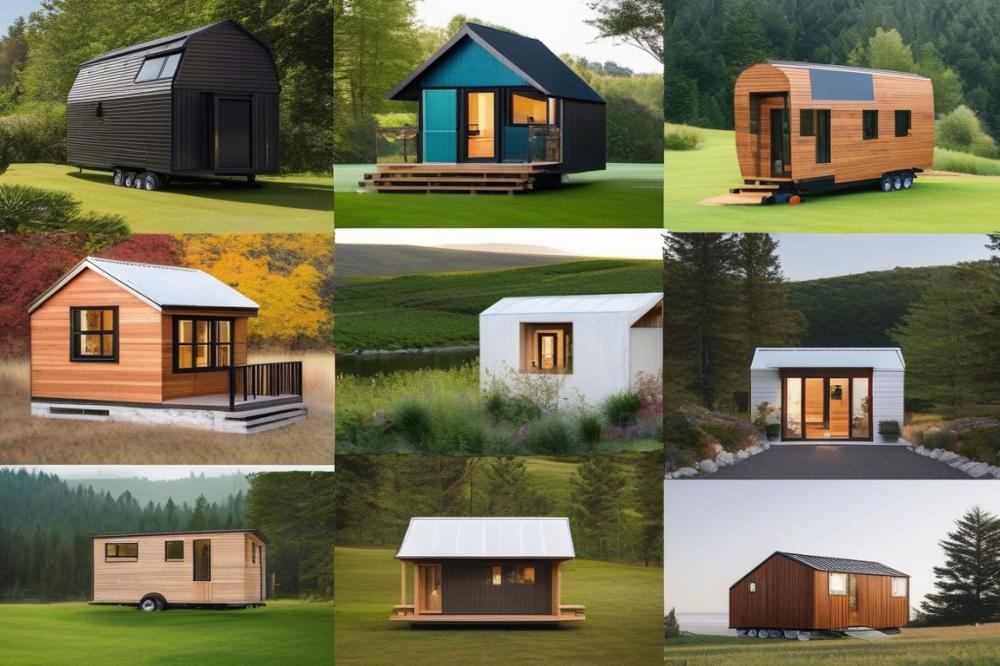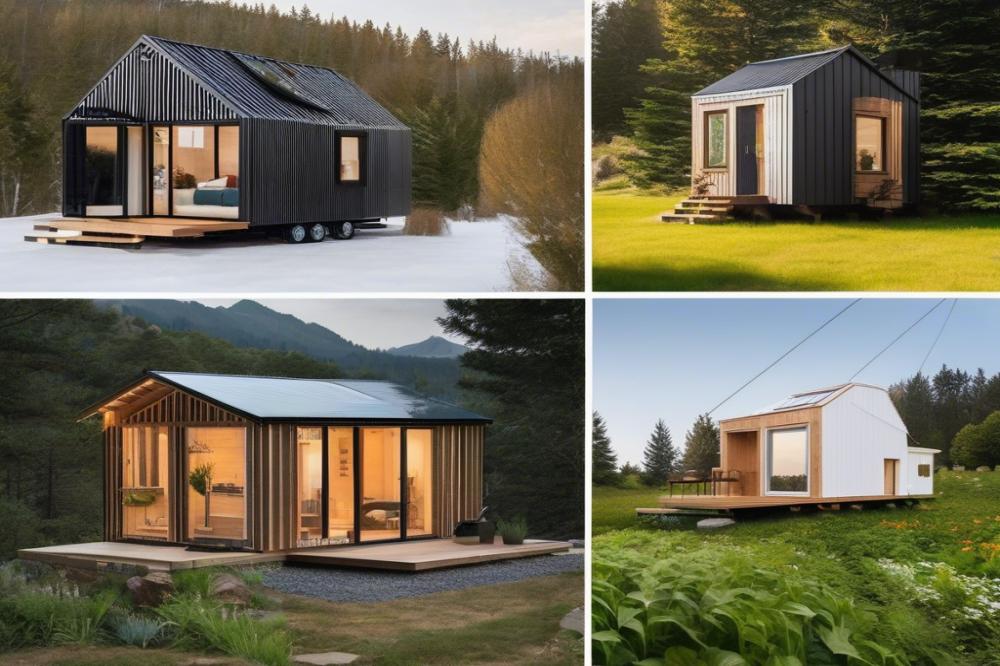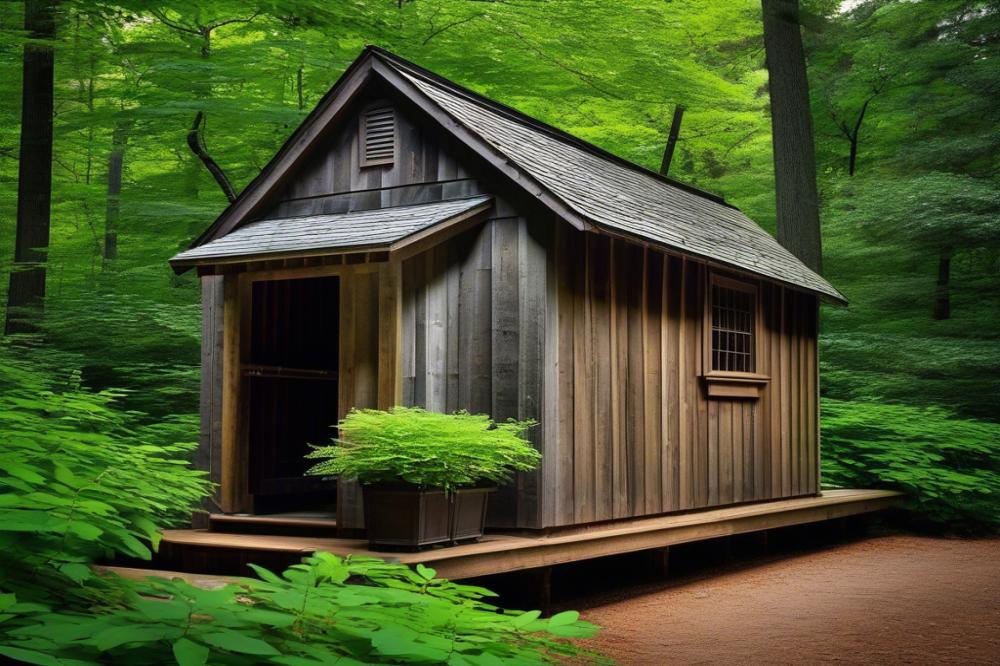Introduction
The Tiny House Movement has gained traction across the USA, captivating those looking to embrace smaller living spaces. As people seek alternatives to conventional living, this movement has become a symbol of freedom and possibility. Many have rushed to explore minimalism, aiming for simpler lives without the burden of excess possessions.
Backyard sheds play a crucial role in this shift. These structures often transform into livable units, known as Shed Homes. With their affordability and DIY appeal, sheds offer an accessible route for families and individuals seeking unique living options. This trend makes it easier for many to participate in tiny home communities, where the ethos of simplicity is celebrated.
Living in small spaces connects directly with the ideas of sustainability and eco-friendly living. Individuals wanting to minimize their carbon footprint find joy in downsizing. By reducing their living area, they also reduce energy usage and waste. This approach aligns well with the growing desire for affordable housing solutions amid rising costs.
Mobility is another appealing aspect of the tiny house lifestyle. People appreciate the chance to travel or relocate without being tied down by a large mortgage. The Shed Movement highlights how small structures can support this flexibility. As a result, many feel empowered to reshape their lives, focusing on what truly matters.
In summary, the connection between sheds and the Tiny House Movement speaks to a broader trend of conscious living. It reflects a shift towards valuing experiences over possessions. The future of housing may very well lean more towards sheds, inspiring creativity and community in the process.
The Concept of Tiny House Sheds

Tiny house sheds are small structures designed for living or storage purposes. They often showcase the principles of minimalism and eco-friendly living. Some people use them as backyard sheds, while others aim for a fully functional tiny home experience. Typically, these sheds are built using sustainable materials and reflect a growing interest in affordable housing.
Comparing tiny house sheds to traditional tiny homes reveals some key differences. Traditional tiny homes usually have wheels for mobility, allowing for travel or relocation. Sheds, in contrast, often remain stationary. Their design may not require permits, which can reduce the hassle when building. Additionally, tiny house sheds tend to focus on simplicity. Their interiors might be less elaborate than those of traditional tiny homes.
Benefiting from small spaces is a common trend among those who downsize. Less space often means fewer possessions. This reduction helps people save money and live a more intentional life. Many tiny home communities embrace this lifestyle, promoting shared values of sustainability and community. DIY enthusiasts often take on shed projects, customizing their spaces to fit their needs. Such creations can lead to a greater appreciation for craftsmanship. Living in a tiny house shed can also foster a connection to nature, enhancing one’s quality of life.
The Rise of Backyard Sheds as Tiny Homes

Transforming backyard sheds into living spaces has become a popular trend across the United States. Many homeowners are looking for new ways to create affordable housing options. Sheds, once used for storage, are now being redesigned for comfortable living. People often tackle these projects as DIY endeavors. This shift reflects a larger movement towards minimalism and sustainability.
Popular designs for tiny house sheds vary widely. Some feature lofted sleeping areas, while others emphasize open floor plans. Rustic styles appeal to many, with wood finishes and natural materials. Others may choose a more modern aesthetic, incorporating large windows and sleek lines. Eco-friendly living influences these choices by encouraging energy-efficient features and sustainable building practices.
The impact on affordable housing solutions cannot be overlooked. As housing prices rise in urban areas, alternative spaces like tiny home communities are seeing growth. Backyard sheds provide a practical answer for those seeking to downsize without sacrificing comfort. Mobility is an added benefit as some owners opt for portable designs. People are redefining what home means, prioritizing functionality within small spaces.
This trend is particularly inviting for those who desire a simpler lifestyle. Living in a tiny home can cultivate a sense of community among neighbors. Sharing resources and ideas connected to downsizing becomes easier when living close together. With many people embracing a more frugal way of life, backyard sheds have taken on a new significance in the housing landscape.
DIY Culture and the Tiny House Shed Movement

The DIY culture plays a significant role in the tiny house shed movement. Many people enjoy the challenge of building their own structures. With DIY designs, individuals can craft something that perfectly fits their personal style. This approach emphasizes minimalism and affordable housing. Backyard sheds can easily become cozy retreats or functional living spaces with a little creativity.
Community resources are abundant for those looking to dive into DIY projects. Workshops often teach essential skills like woodworking and design. Local groups and online forums encourage sharing knowledge and experiences. Many builders support each other through shared tips and advice. These communities foster a spirit of sustainability and innovation. By working together, enthusiasts help one another create unique and eco-friendly living solutions.
Successful DIY tiny house sheds can be found in various neighborhoods. For example, one couple turned a simple shed into a charming studio by using reclaimed materials. Another family transformed their backyard space into a small home, showcasing how mobility can complement the concept of downsizing. These projects highlight the versatility of small spaces.
Building a shed from the ground up is often more than just a financial decision. It reflects personal values like self-sufficiency and creativity. People who embrace this lifestyle take pride in crafting their own living spaces. They break away from traditional housing trends and often seek eco-friendly options. In tiny home communities across the nation, these DIY efforts are becoming a powerful movement.
Sustainability and Eco-friendly Living
The tiny house shed movement focuses heavily on sustainability. Building these small homes often involves using recycled materials, which reduces waste. Many owners embrace eco-friendly living by opting for repurposed wood, metal, and insulation. These choices help lessen the environmental impact associated with traditional housing.
Energy-efficient designs play a crucial role in construction. Small spaces require less energy to heat and cool, which can lower utility bills. Solar panels are a popular addition, providing clean energy for everyday use. Incorporating rainwater collection systems and composting toilets also increases a tiny home’s efficiency.
Minimalism often accompanies the tiny house trend. Many people choose to downsize their belongings, focusing on what truly matters to them. This lifestyle shift encourages a connection to nature and a simpler way of living. By reducing material possessions, residents feel lighter and more free.
For many, backyard sheds serve dual purposes. They function as both storage and living spaces, making them versatile. Tiny home communities are rising in popularity. These developments promote a sense of belonging while embracing sustainable practices. Mobility becomes easier for individuals who want to travel or relocate without hassle.
Affordable housing is another significant benefit of this movement. With rising housing costs, tiny homes offer an attractive option for many. DIY projects allow individuals to design their own spaces and personalize their environment. Overall, the tiny house shed movement reflects a deeper commitment to eco-friendly living and community-focused values.
Tiny House Communities and Mobility
Emergence of Tiny House Communities Across the USA
Across the United States, tiny house communities are cropping up in various regions. These villages often consist of small homes that encourage simplicity and collective living. Interest in minimalism, along with a focus on affordable housing, has driven this movement. Many people see these communities as a solution to high living costs and a desire for a more intentional lifestyle. Residents can choose shared amenities, making small spaces feel larger through collaboration. Backyard sheds have also found new purposes, being transformed into small homes that add to the appeal.
Benefits of Community Living in Tiny Spaces
Living in a close-knit community offers several advantages. Social connections become easier when neighbors share communal spaces. Each person contributes to a vibrant, supportive environment. Smaller living quarters often inspire individuals to prioritize experiences over material possessions. Eco-friendly living becomes a common goal, as many residents adopt sustainable practices together. For some, community gardens provide fresh produce and a chance to bond while nurturing the earth. Such benefits are what entice more people to trade traditional homes for these unique alternatives.
Opportunities for Mobility and Relocation
Flexibility is another appealing aspect of tiny house communities. Many homeowners embrace mobility, seeking to relocate their tiny homes as needed. This movement represents a shift in how people view homeownership and property. Often, residents can transport their homes to different locations, allowing for new adventures and experiences. Downsizing makes this lifestyle possible, giving individuals a chance to explore various environments with ease. Tiny home communities often adapt quickly to changing circumstances, making them ideal for those who crave both stability and wanderlust.
Famous Tiny House Sheds in the USA and Beyond
As the Tiny House Shed Movement grows, certain examples stand out. These tiny retreats highlight creative use of minimalism and space. From coast to coast, distinct designs catch the eye and inspire potential builders.
Showcasing Notable Tiny House Sheds
One popular shed is the “Sanctuary Shed” located in Oregon. This charming structure embraces eco-friendly living. Built from reclaimed materials, it blends perfectly with its natural surroundings. Residents enjoy their own little piece of paradise, focusing on rest and relaxation.
Another impressive design can be found in the heart of Austin, Texas. The “Backyard Cottage” serves as a guest house or rental unit. Smartly designed, it fits all essentials in a compact layout. Many visitors enjoy the charm and comfort of these small spaces.
Innovative and Unique Designs from Different Regions
Traveling to the east coast, a famous tiny house shed in Maine stands out. This model is built on wheels, allowing easy mobility. People appreciate the opportunity to experience different environments without giving up their home. The shed offers flexibility, a crucial factor in today’s world.
California boasts numerous tiny home communities. Many of these feature stunning designs aimed to enhance affordability. Residents often celebrate life in smaller quarters, trading excess for experiences. A recent addition, a modern shed in San Diego, captures attention for its vibrant colors and inventive architecture.
Lessons Learned from Famous Tiny House Shed Examples
Various lessons emerge from these iconic tiny sheds. Effective organization is crucial in maximizing small spaces. Each structure teaches builders about the balance between functionality and style. Sustainable practices highlight the importance of eco-friendly choices in construction.
Moreover, DIY enthusiasts learn value through these examples. Constructing a tiny house shed requires creative problem-solving and personal touch. Communities often share knowledge, assisting newcomers navigate their own projects. Insights gained from successful builds can lead to improved designs and liveability.
Downsizing has become an appealing lifestyle choice for many. The freedom of less clutter creates a more intentional way of living. Famous tiny house sheds demonstrate the joy found in simplicity and purpose. Residents find satisfaction in embracing a minimalist mindset while enjoying their cozy retreats.
Wrapping Up the Tiny House Shed Movement
The Tiny House Shed Movement has emerged as a significant trend in the U.S., highlighting the need for innovative housing solutions. This movement not only promotes a simpler lifestyle but also offers a viable alternative to traditional housing options. People are drawn to the idea of smaller living spaces designed to maximize functionality. As housing prices soar, tiny house sheds provide a way to find affordable housing without sacrificing comfort or style.
Looking ahead, the prospects for tiny house sheds remain bright. With increasing awareness about environmental issues and the benefits of minimalism, more individuals are considering these homes. As the movement grows, building regulations may evolve to better accommodate tiny structures. Communities may also begin to embrace these homes, recognizing their potential to address housing shortages.
For those curious about this lifestyle, the tiny shed concept might inspire exploration. Think about how a small space could change your living experience. Even a shed can transform into a cozy retreat or office workspace. Whether you’re looking to downsize or simply want to try something different, tiny living can offer an exciting new chapter. Embracing this trend encourages creativity and resourcefulness, leading to experiences that enrich your life.



